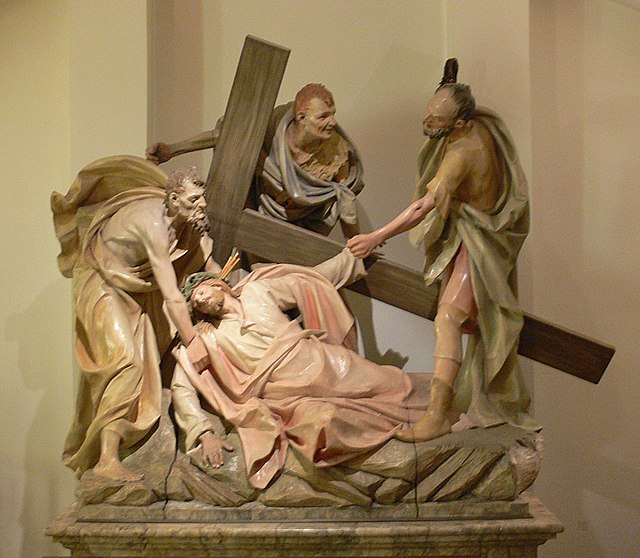Saint Veronica, also known as Berenike, was a widow from Jerusalem who lived in the 1st century AD, according to extra-biblical Christian sacred tradition. A celebrated saint in many pious Christian countries, the 17th-century Acta Sanctorum published by the Bollandists listed her feast under July 12, but the German Jesuit scholar Joseph Braun cited her commemoration in Festi Marianni on 13 January.
Saint Veronica, by Hans Memling, c. 1470.
Saint Veronica and the Holy Women, Grégoire Guérard, c.1530
Cloth of Saint Veronica, Bernardino Zaganelli, c. 1500, oil on panel, Philadelphia Museum of Art
Albrecht Dürer's 1513 Veronica
Christ Carrying the Cross
Christ Carrying the Cross on his way to his crucifixion is an episode included in the Gospel of John, and a very common subject in art, especially in the fourteen Stations of the Cross, sets of which are now found in almost all Roman Catholic churches, as well as in many Lutheran churches and Anglican churches. However, the subject occurs in many other contexts, including single works and cycles of the Life of Christ or the Passion of Christ. Alternative names include the Procession to Calvary, Road to Calvary and Way to Calvary, Calvary or Golgotha being the site of the crucifixion outside Jerusalem. The actual route taken is defined by tradition as the Via Dolorosa in Jerusalem, although the specific path of this route has varied over the centuries and continues to be the subject of debate.
Andrea di Bartolo, Way to Calvary, c. 1400. The cluster of halos at the left are the Virgin Mary in front, with the Three Marys.
Sebastiano del Piombo, about 1513-14
Jesus falls the second time from a 19th-century German Stations of the Cross
Christ Falling on the Way to Calvary, Raphael, 1516–1517








